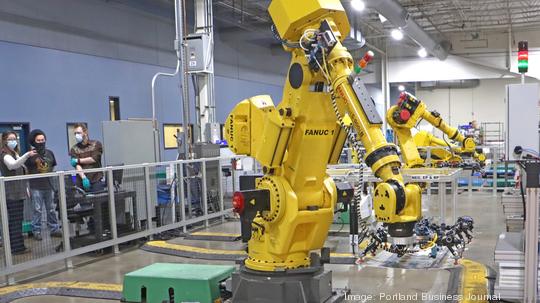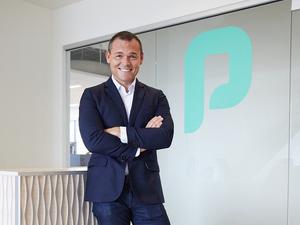
ESS Inc. fell short of its delivery target in 2022, supply issues continued to slow it down, and it has more work to do to bring down unit costs.
But the Wilsonville-based long-duration energy storage company built out significant production capacity last year, still had $140 million in the kitty as of Dec. 31, and grid decarbonization trends and the Inflation Reduction Act certainly count as tailwinds.
Amid those mixed signals, investors haven’t been kind to ESS, with the stock (NYSE: GWH), which closed at $1.56 on Monday, down around 80% since it hit the New York Stock Exchange in October 2021.
Want more Portland business news? Sign up for our daily email newsletters.
In reporting fourth quarter and 2022 full-year financial results last week, ESS executives touted progress while acknowledging “bumps in the road,” then laid out the priorities for 2023.
“We are aiming to strengthen our supply base for consistent timely delivery at greater scale, while driving down costs across labor and cost of goods as we drive toward unit profitability,” CEO Eric Dresselhuys said.

That struck a chord with analysts who, while now forecasting a slower ramp-up for ESS, remain attracted to the company’s iron-based flow battery, which promises to deliver power for twice or more the 2-4 hours proved by lithium-ion batteries, the incumbent technology.
“We are making substantial reductions to our revenue outlook for (ESS) as the company moderates its pace of growth in an effort to conserve cash and focus on reducing manufacturing cost,” Guggenheim’s Joseph Osha said. “We nonetheless continue to believe that (ESS) is the best way, in public markets at least, to invest in the growing market for long-duration energy storage.”
A year ago, ESS was eyeing delivering 40 to 50 of its Energy Warehouse units in 2022. It tamped down the outlook as the year wore on. Sitting at 10 units as of the end of the third quarter, Dresselhuys in November said the company could do “20 or more” in the final quarter, but it ended up adding 14 to the tally.
Because it can take several months to recognize revenue on deliveries, ESS reported just $900,000 in sales in 2022. It lost $105 million on operations as research and development expenses — a category where most product-development costs reside — rose $42 million to $72 million.
Dialing down forecasts
The company didn’t issue guidance for 2023, but Guggenheim’s Osha estimated it would deliver 55 to 66 Energy Warehouses. He dialed down his annual revenue forecast from $39 million to $16 million. Slower growth might not be a bad thing right now, he said, because “the company needs to address cost and manufacturability issues before it can scale.”
Guggenheim trimmed its ESS share target from $7 to $4.
ESS grew from 160 to 271 full-time employees in 2022, but much of its investment has been aimed at driving out labor costs from its product with automation. “Unit costs have been more than halved in the last year, year and a half,” Dresselhuys said. He declined to give a formal positive gross margin target, but did offer that “the way to think about it is we'll cross that line on unit profitability in the next 12 to maybe 18 months on the long side.”
Oppenheimer’s Colin Rusch ratcheted down his ESS revenue forecast for 2023 after ESS’s latest numbers came out, from $164 million to $78 million, but maintained an $11 price target for the stock.
“As we adjust estimates to reflect a slower ramp in 2023, we continue to believe the company is laying the foundation for a sharp topline inflection later this year,” the analyst wrote. “We are looking for revenue recognition, incremental sales contracts, and accelerating production as key markers along that trajectory.”







